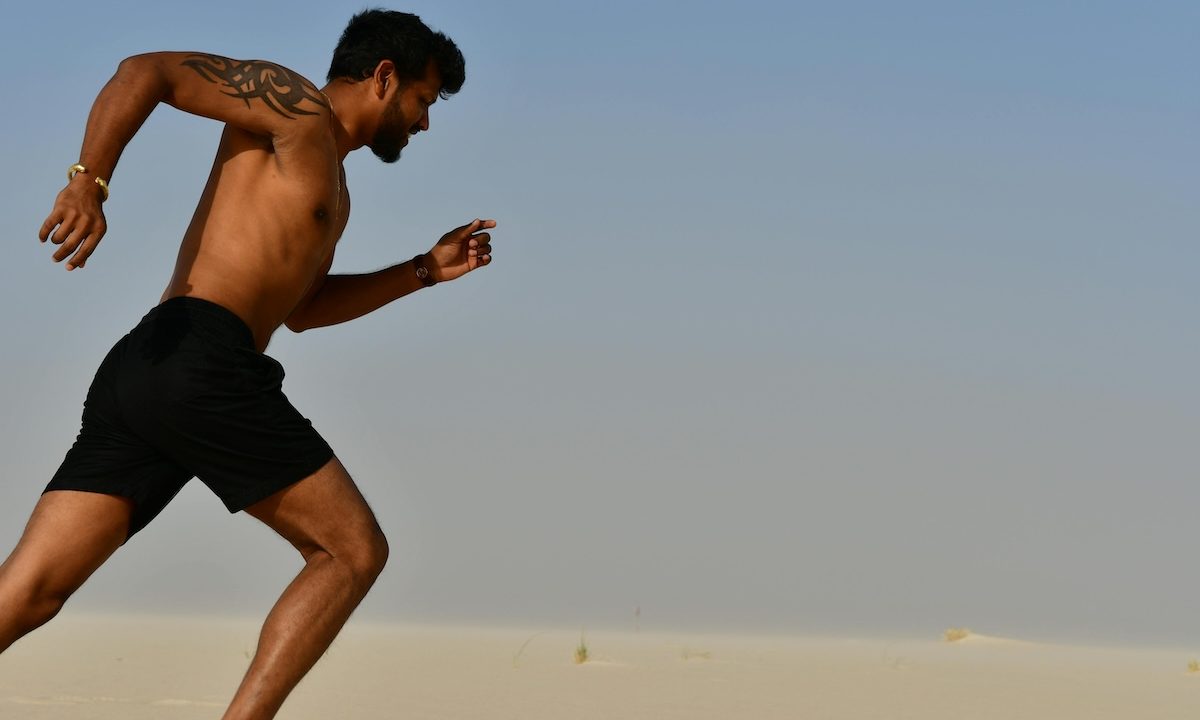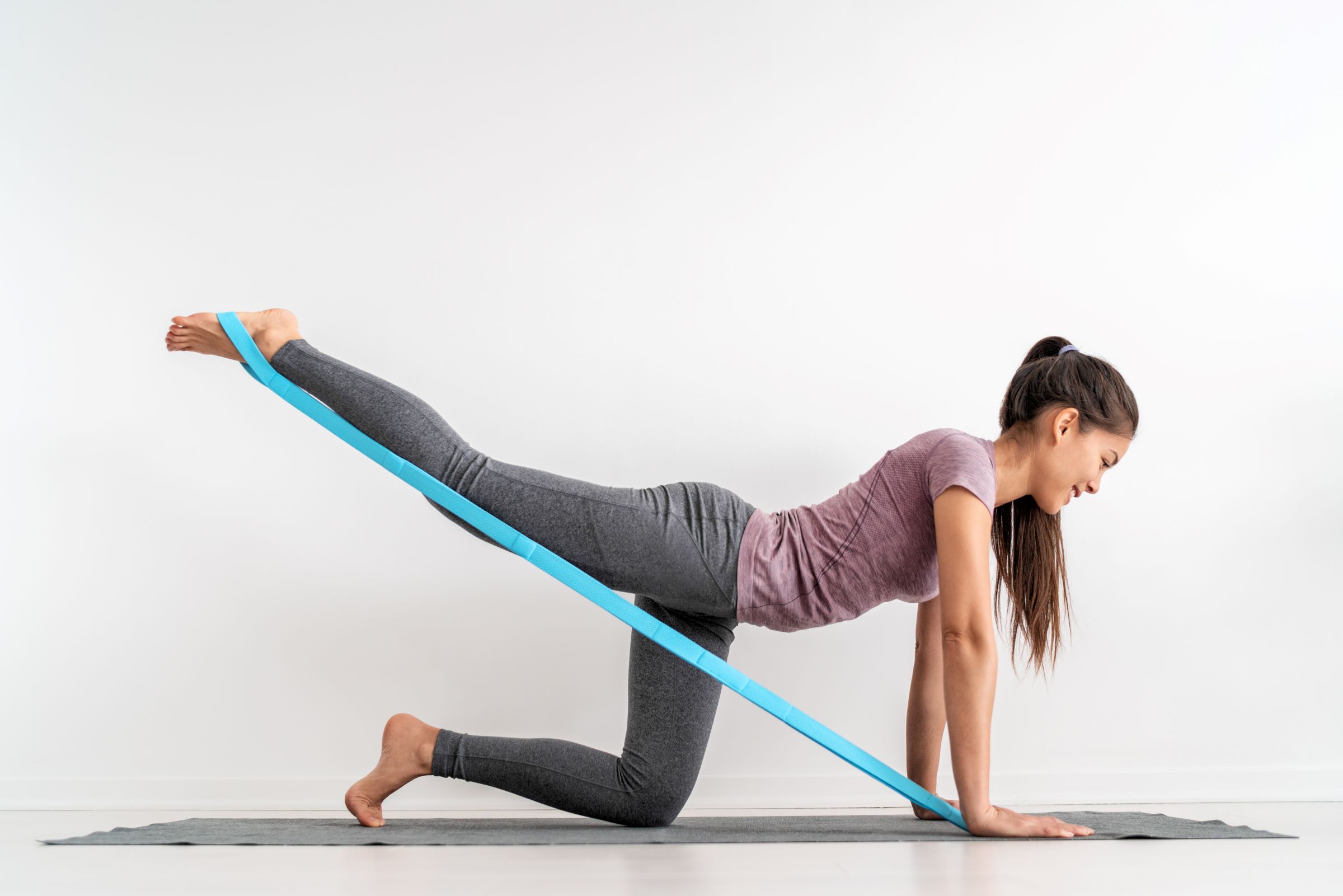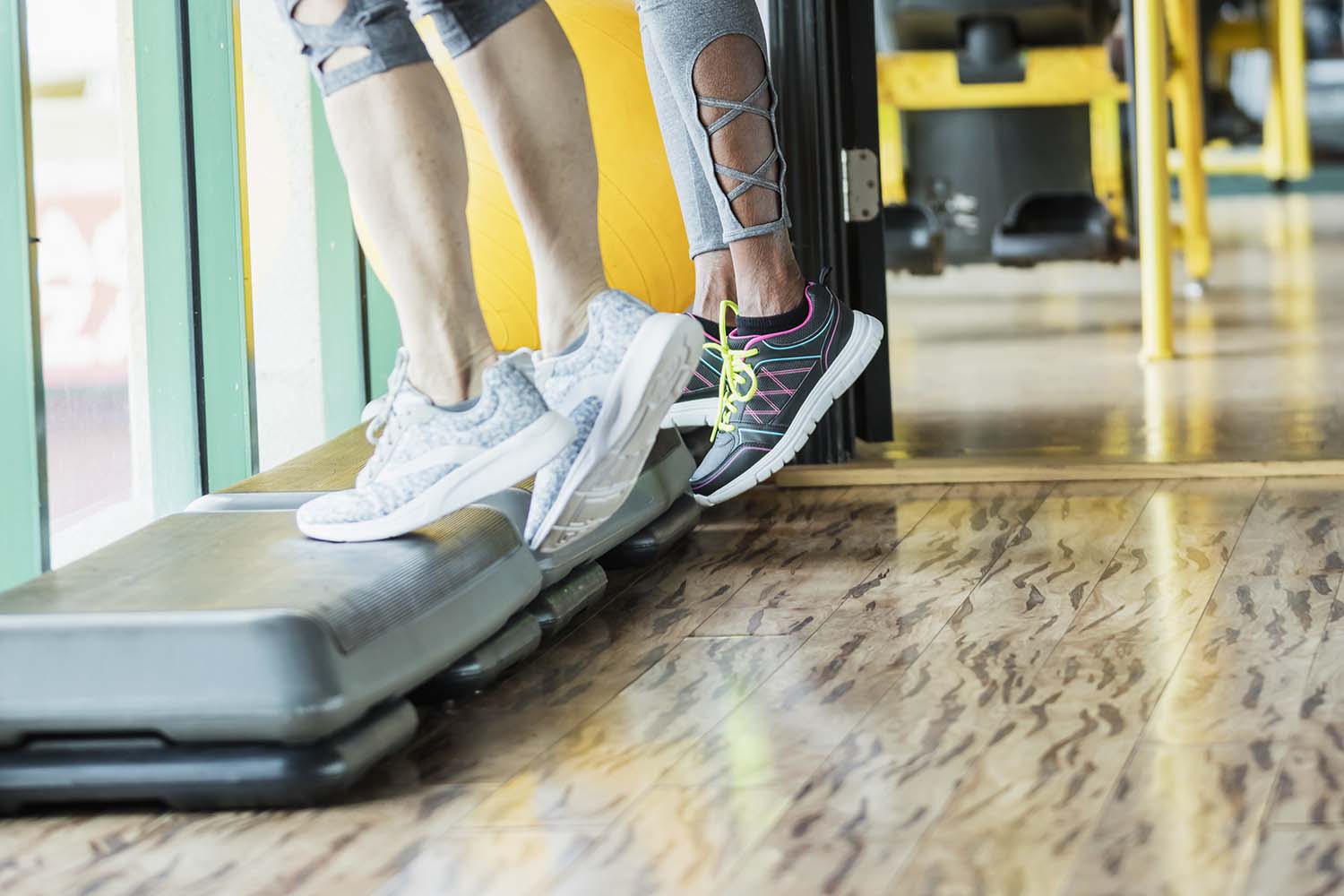It goes without saying that your legs are one of your most important body parts when it comes to running. Certain exercises can help you develop strength and endurance in those major leg muscles and joints. When you perform these leg exercises, you should start to see results as you run faster and longer distances and varying terrains over time. You’ll improve your balance and running form, build stamina, and reduce your risk of injury. The right leg-focused exercises can propel your runs to the next level. Read on for the best leg workouts for runners.
What are the benefits of running?

Here are some of the many reasons to set off on foot and go running:
- Burn calories and get your cardio in.
- Improve your endurance and build stamina.
- Increase your cardiovascular strength.
- Improve your blood pressure and circulation.
- Better sleep quality.
- Better mood and feel-good endorphins.
Running is a high-impact and weight-bearing physical activity that does exert pressure on your bones and joints, but it can be a healthy stress that prompts your bones to get stronger and improves bone density.
Why do runners need strong legs?

Your major hip and leg muscles, like your quads, hamstrings, and calves, do most of the work when you run. Your shoulders and other muscles also offer support. Stronger legs reduce your risk of running injury and help you maintain better form so that you can run faster or longer distances. More powerful leg muscles can better absorb and handle the ground reaction forces of running.
You also use your legs every day to walk around everywhere. Strengthening these major leg muscles helps correct muscular imbalances and enhances your ability to complete your everyday activities.
Best leg workouts for runners

Try to include a range of different exercises in your workout routine to keep it interesting and for the best results. Work on perfecting your form before improving speed or going for higher reps.
Donkey kickback

The donkey kickback is an effective exercise for your glutes, hamstrings, and hip flexors. The scientific name is the quadruped bent-knee hip extension. As you kick your leg back like a donkey with this movement, try to focus on engaging your core and glutes.
How to do the donkey kickback:
- Start in the tabletop position on all fours with your knees about hip-width apart and your hands under your shoulders.
- Engage your core and start to lift your right leg back behind you, keeping your knee bent and your foot flat.
- Using your glute muscles, try to press your foot directly up toward the ceiling.
- Your neck and spine should stay neutral throughout this movement.
- Return your leg back to the starting position.
- Repeat until you complete the set.
- Switch to the other leg.
Pendulum lunge

The pendulum lunge takes the traditional lunge to the next level by alternating one leg between the forward and reverse lunge. You’ll target your hamstrings, quads, glutes, calves, and core. The pendulum lunge is an excellent move for runners because you’ll improve your balance, stability, control, and muscle acceleration and deceleration in multiple directions. Hold a dumbbell in each hand with your arms down by your sides to make this exercise more challenging.
How to do a pendulum lunge:
- Step into a forward lunge and bring your back knee down to the ground. Your front knee should be stacked right above your front ankle on that same side.
- Keep your back foot planted on the ground while performing a reverse lunge with your forward leg. Now your legs have switched positions.
- Now, bring your back leg forward into the lunge position.
- Repeat the pendulum motion until you complete the set.
Bulgarian split squat

The Bulgarian split squat is a killer leg workout that engages your hamstrings, quads, calves, and glutes. You’ll need a sturdy chair, bench, couch, or another elevated surface to rest your back foot for this movement. Your legs are in a lunge position, with one foot forward and the other behind you. The Bulgarian split squat is a more difficult variation of the traditional squat that allows you to sink deeper down and work on your hip flexibility.
How to do a Bulgarian split squat:
- Start by standing in front of a step, chair, or bench facing away from the step with your feet about hips-distance apart. You should be about two feet away from the step.
- Lift your right leg and place the top of your right foot on the step.
- Try to make sure your feet are still about hips-width apart and engage your core.
- Bend your left knee and lower yourself down as if you’re moving down into the lunge position.
- Pause for a moment at the bottom of the movement.
- Drive back up to your starting position with control.
- Repeat to complete the set.
- Switch to your other leg.
Wall sit

Wall sits involve exactly that, sitting or squatting with your back against the wall. This simple but effective isometric leg exercise will strengthen your calves, glutes, and quads. All you need is a wall, and you’re good to go.
How to do a wall sit:
- Stand with your feet about shoulders-distance apart and your back against a wall.
- Bend your knees to lower your body down into a seated position as if you’re sitting on an invisible chair.
- Lower down until your thighs are parallel to the floor and your knees are above your ankles.
- Try to keep your back flat against the wall and avoid arching your lower back.
- Engage your core to maintain stability.
- Hold the pose for as long as you can or for a set duration, such as 30 seconds. Try to stay focused on proper form.
- When you’re ready, you can push up through your heels and straighten your legs to slowly stand up.
- Repeat until you complete the set.
Box jumps

The box jump is aptly named because you jump up onto a box, which builds explosive power in your legs and glutes and raises your heart rate. You’ll become faster and more agile over time while burning those calories and working your lower body.
How to do a box jump:
- Stand facing the box with your feet hip-width apart and about 6 inches away from the box.
- Bend your knees, press back into your hips, and move your arms back behind you to help generate jumping power.
- Press through the balls of your feet to jump straight up into the air while swinging your arms up and forward.
- You’re trying to get enough jumping power to jump up onto the box.
- At the peak of your jump, try to make sure you bend your knees and hips to bring yourself forward to land safely with both feet on top of the box.
- When you land on the box, your feet should be about hips-distance apart in the right position.
- Carefully step down off the box and repeat until you complete the set.
Pistol squat

The pistol squat is the same as the single-leg squat, and it’s a superior choice for improving your balance and coordination and working your hips, quads, glutes, and hamstrings. Having good balance is key for runners to lower your risk of injury. You can make this exercise a little easier by coming down into a seated position with one leg lifted on a chair or couch. You can push off the chair to stand back in the starting position. You can also just start with a more shallow squat while you master your form.
How to do a pistol squat:
- Start standing on your right leg with a slight bend in your standing knee.
- Engage your core and lift your left leg. Extend your left leg straight out in front of you with a slight bend in your left knee.
- Bring your hips back and down to lower your right leg into a squat position.
- Your back should be straight, with your right knee hovering just over your foot.
- Slowly bring yourself back up to the starting position.
- Repeat until you complete the set.
- Switch to your other leg.
Calf raise

Calf raises work your calves but also target your Achilles and important muscles in your feet. A strong Achilles tendon is pivotal for marathon runners. Marathon runners are more likely to get Achilles tendonitis without the proper precautions. When running, your Achilles tendon withstands the strain of multiple times your body weight. Calf raises are another superior exercise for enhancing your overall balance and stability.
How to do a calf raise:
- Support yourself by standing up straight and holding your hand on a rail with your feet about hip-width apart. Your weight should be evenly distributed.
- Your feet should be on a flat surface with your toes pointed forward.
- Slowly push through the balls of your feet to lift your heels up off the floor as high as you can go.
- Pause for a moment at the top of the movement and squeeze your calves.
- Lower your heels back down to the starting position.
- Repeat until the set is complete.
Sumo squat

The sumo squat variation exerts less stress on your knees and gives you better hip strength and stability as you master this movement. Sumo squats are beneficial for addressing muscular imbalances and emphasizing hip abduction. You’ll strengthen your quads, glutes, hamstrings, calves, and adductors. You can also add weights to this movement to up the challenge.
How to do a sumo squat:
- Unlike the traditional squat, take a wider stance and point your feet outward. Your stance should be about 3 or 4 feet wide or wider than your hips. This is the key difference with the sumo squat.
- Laterally rotate your hips to angle your toes out about 45 degrees.
- Try to stay balanced and centered over your feet and bring your hips back down into a squat position like you’re sitting in an invisible chair.
- Try to keep your spine neutral throughout.
- Pause for a moment before bringing yourself back up to the starting position.
- Repeat until the set is complete.




